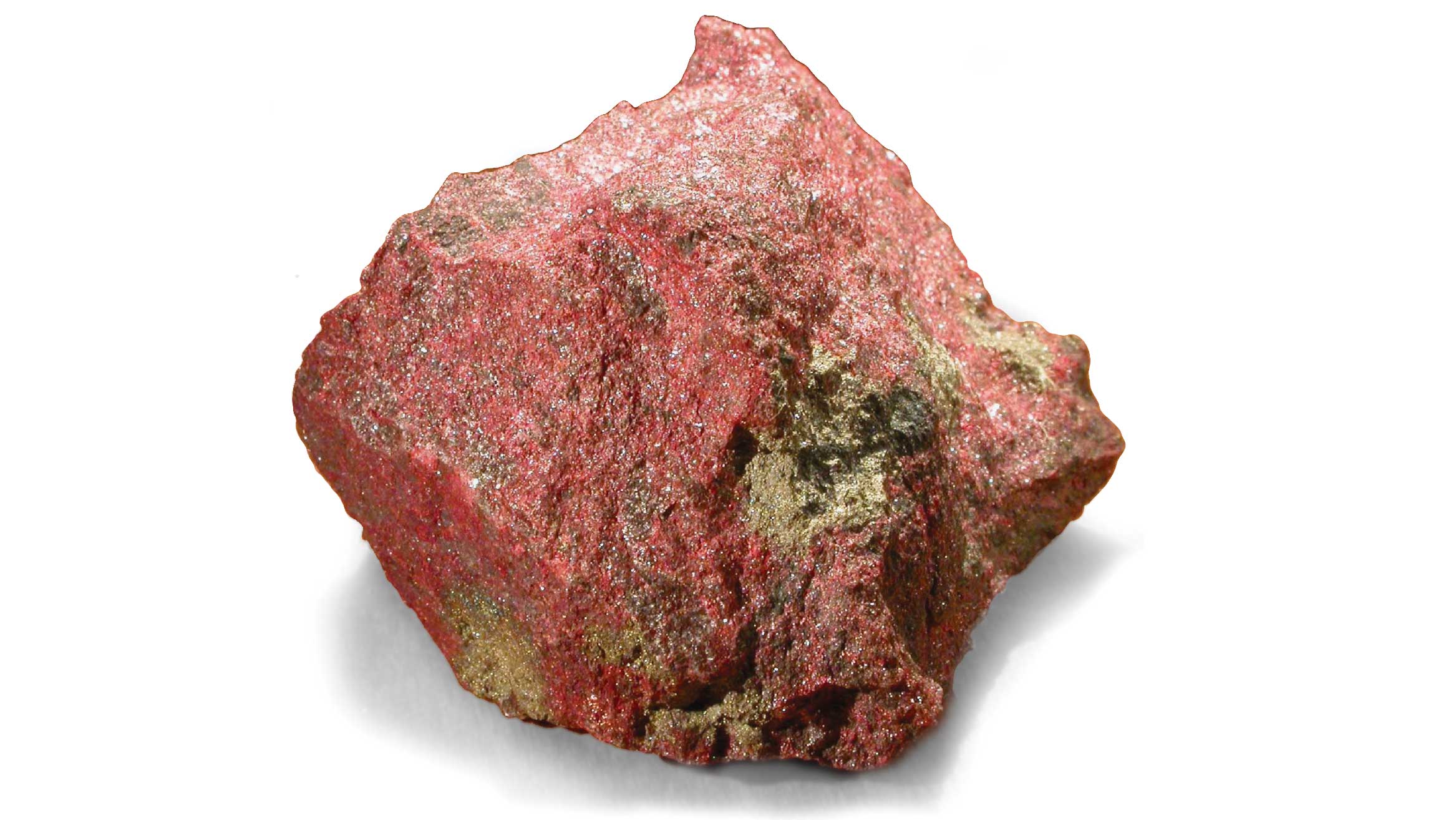
Cinnabar has been mined and used as a precious resource by many cultures around the globe since at least the tenth millennium B.C. Cinnabar is also known as “vermilion.” The two terms are used interchangeably by both ancient authors and modern scholars because chemically, the two substances are the same: red mercuric sulfide (HgS). But “cinnabar” refers to the mineral, while “vermilion” is the synthetic pigment. Until the discovery of cadmium red in the early twentieth century, vermilion was the most widely used red pigment around the globe and the most vibrant red.
Origin and History
The word cinnabar most likely comes from the ancient Greek κιννάβαρι kinnabari, later romanized to cinnabaris. In Persian, it is known as شنگرف shangarf; in the Arabic world, it appears as زنجفرة zinjifrah. Cinnabar, the most common ore of oxidized mercury found in nature, occurs in granular crusts or veins associated with volcanic activity and hot springs.
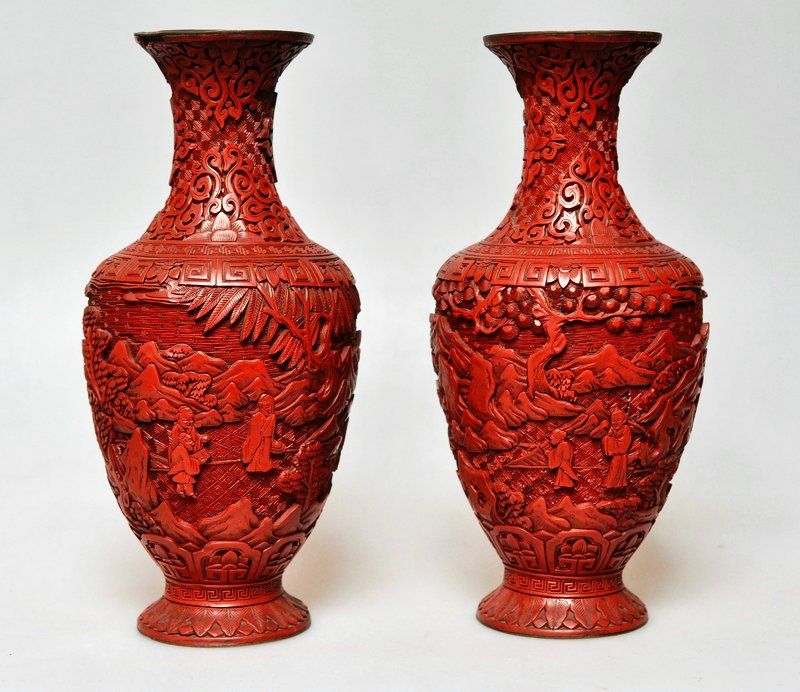
Chinese carved cinnabar lacquerware, late Qing dynasty. Adilnor Collection, Sweden.
Cinnabar is a historical mineral but surprisingly not found in ancient Egyptian or early Mesopotamian objects. It was well known to the Greeks and Romans and has been widely used in China since the third millennium B.C.
The Greek botanist Theophrastus described its sources and methods of extraction in the fourth century B.C., but there are also significantly earlier Greek objects with traces of cinnabar.
Like the Greeks, the Romans also used cinnabar. The natural philosopher Pliny the Elder noted that the Romans regarded cinnabar as having great importance and sacred associations. Cinnabar ore used during this period was obtained from Almadén, Spain, the largest mercury mine in the world.
In late antiquity, alchemists interested in turning base metal into gold were also interested in substances like liquid mercury and cinnabar because of their unusual physical properties. A process for producing a synthetic form of the pigment vermilion was recorded by a Greek alchemist, Zosima of Panopolis, living in Upper Egypt by at least the fourth century A.D., and by a Persian alchemist, Jabir ibn Hayyan, around the eighth century A.D.
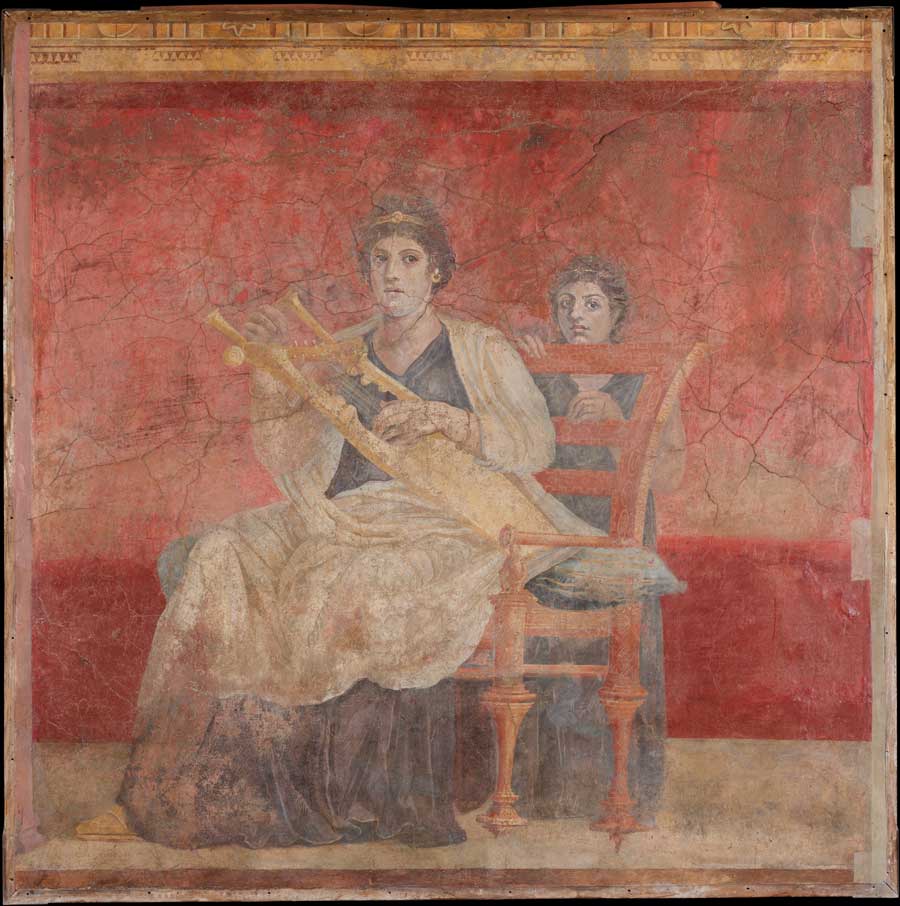
Wall painting from Room H of the Villa of P. Fannius Synistor at Boscoreale, c. 50–40 B.C. Roman, Late Republic. Fresco, 73 1/2 x 73 1/2 in. (186.7 x 186.7cm). The Metropolitan Museum of Art, New York
Synthetic vermilion was made by either a dry or a wet method. The dry method—possibly invented first in China as early as the fourth century B.C.—consisted of heating mercury and sulfur in a sealed container.
Source
As the most common source of mercury in nature, cinnabar has been mined for thousands of years, even as far back as the Neolithic Age [Martin]. During the Roman Empire, it was mined both as a pigment and for its mercury content.
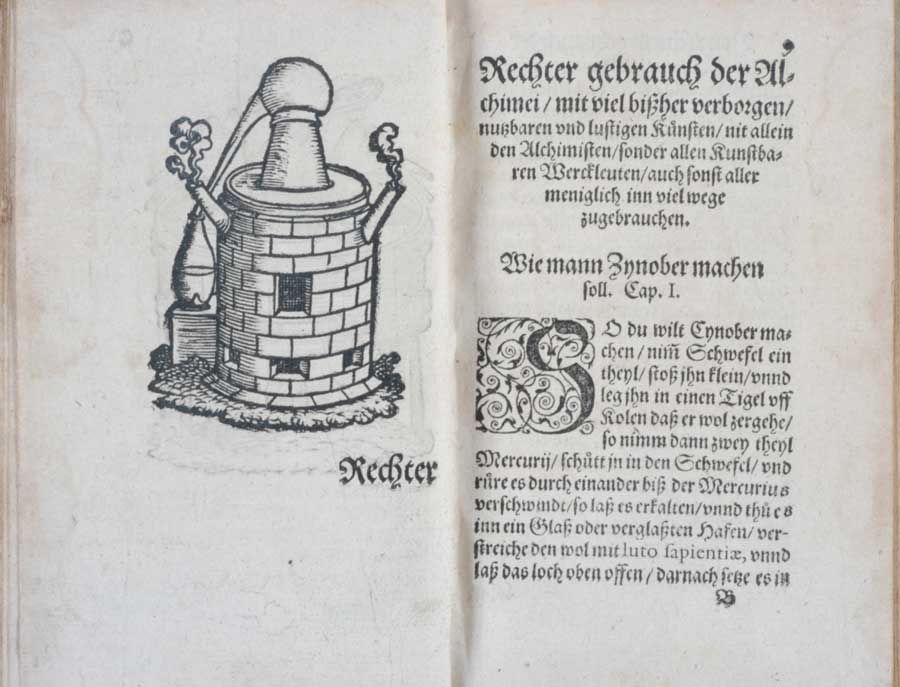
Apparatus for the distillation of cinnabar, Alchimia, 1570
To produce liquid mercury (quicksilver), crushed cinnabar ore is roasted in rotary furnaces. Pure mercury separates from sulfur in this process and quickly evaporates. A condensing column collects the liquid metal, often shipped in iron flasks.
Cinnabar is a red crystalline form of mercuric sulfide, a natural red mineral occurring as a vein-filling mineral associated with recent volcanic activity and alkaline hot springs. The Romans mined it for its mercury content, which has been the principal ore of mercury throughout the centuries. Some mines used by the Romans are still being mined today. Cinnabar is found in all localities which yield mercury, notably Almadén, Spain; Idrija, Slovenia; Landsberg, near Ober-Moschel in the Palatinate; Ripa, at the foot of the Apuan Alps, Tuscany; the mountain Avala, Serbia; Huancavelica, Peru; Kweichow and Hunan Provinces, China; Doneckaia region, Ukraine; and California, Oregon, Texas, and Arkansas, USA.
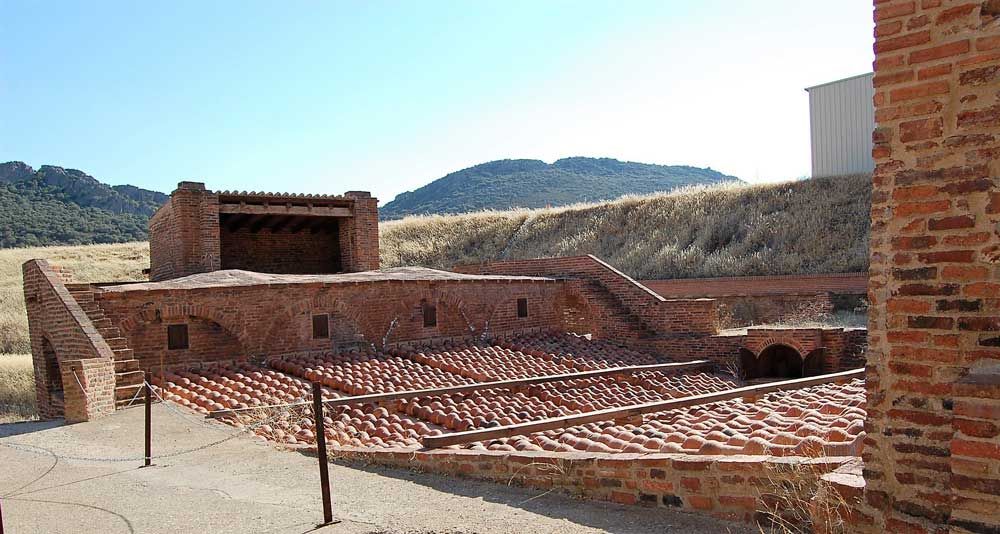
Furnace of Bustamante of the mines of Almadén. Province of Ciudad Real, Spain
Almadén, a community in Spain, is home to the world’s greatest reserves of cinnabar. The geology of the area is characterized by volcanism. Due to the human toxicity of mercury and its byproducts, the mine has variously employed penal labor, slave labor, and prisoners of war over its long history. Almadén mine stopped working in 2002 due to the prohibition of mercury mining in Europe. In 2006, the mine opened to the public, who can visit the first level, which is 50 meters underground.
In 2012, Almadén and Idrija (Slovenia) were declared World Heritage Sites, with the nomination “Heritage of Mercury.”
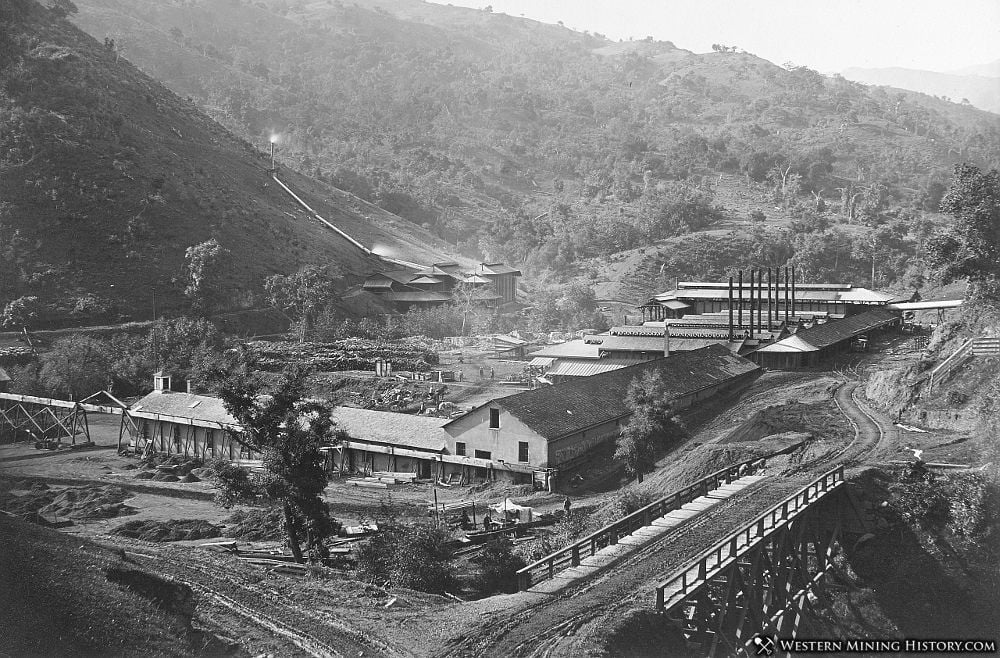
New Almadén Mine (12 miles south of San Jose, California) produced mercury beginning in 1845 and closed in 1912.
Permanence and Compatibility
Some authorities today do not consider cinnabar to be a permanent pigment. However, samples have been known to withstand exposure to direct sunlight for at least ten years. It is remarkably unreactive with other pigments despite being a sulfide. In oil-medium, it was commonly used with lead white to produce flesh tints with no sign of formation of black lead sulfide. It was used on alkaline lime fresco walls. The traditional use of red glazes of madder, kermes, and cochineal lakes over cinnabar underpainting not only increases the purity (chroma) of the color but has been shown to reduce its tendency to darken. Although considered by some to be an erratic pigment, cadmium reds do not replace its unique hue or physical characteristics.
Although the darkening of vermilion has been studied extensively, it is today not fully understood. In many paintings, vermilion has survived for hundreds of years unchanged, while in others, it has developed a black or silver-grey crust. Some insight into the process has been gained from these studies, which have established from experiments on test samples that various impurities can accelerate the blackening [Spring]. The natural mineral is said to be more stable than the manufactured vermilion.
The discoloration of vermilion may consist of a thin blackened layer overlying coarser white and black altered paint, with unaltered red beneath. Findings show that the white material is mercury(I) chloride, calomel, while the black is likely metacinnabar. It is suggested that the alteration results from chlorine impurities or chlorine from dirt. The origin of the chlorine may be sodium chloride from skin debris or from other substances in the environment. Glazing applied over still-red vermilion can protect it from dust and light, and the presence of varnish is also (partially at least) protective against discoloration [Spring].
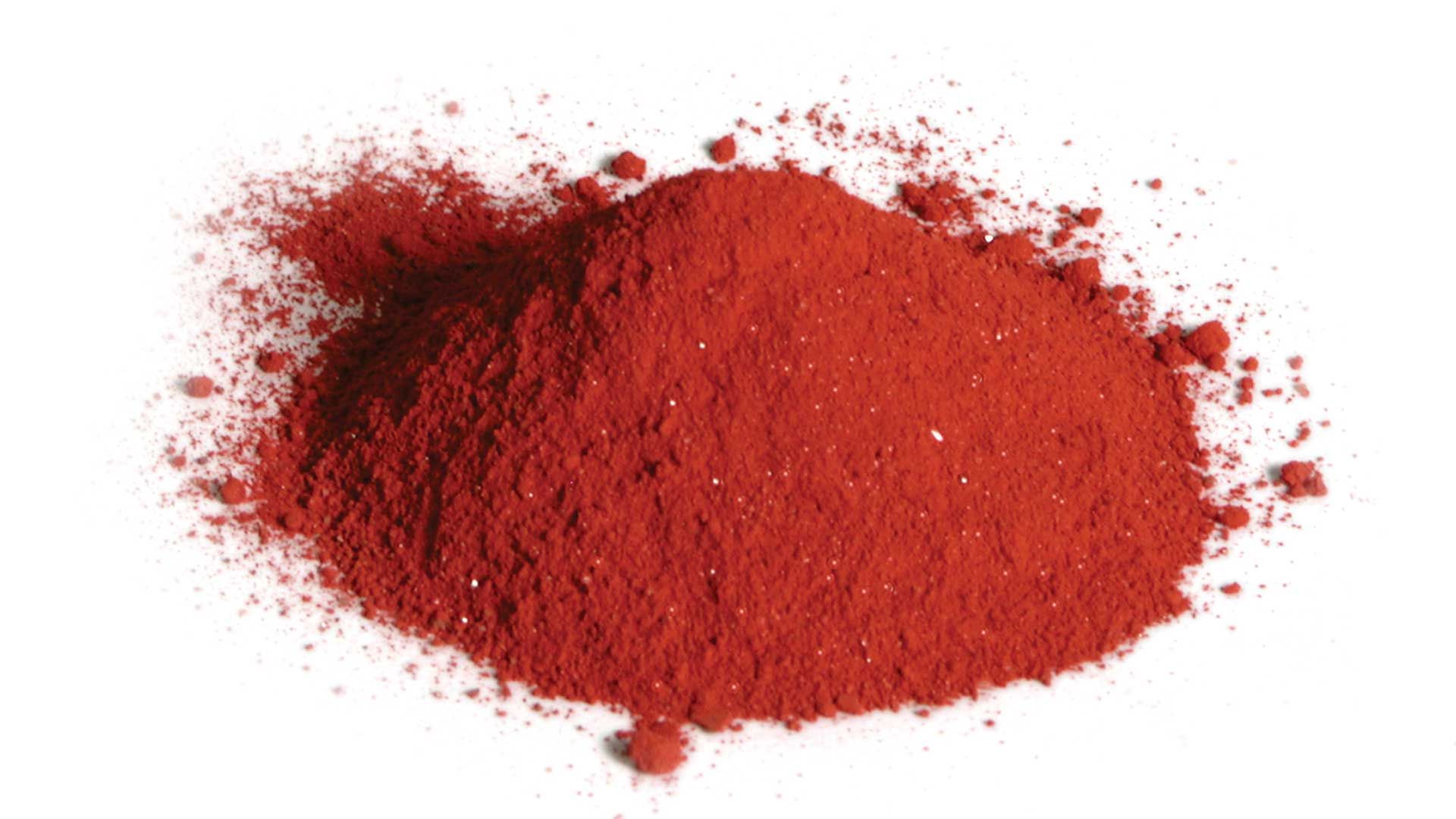
Pigment: Rublev Colours Cinnabar from deposits in Nikitovka region, Ukraine
Oil Absorption and Grinding
Cinnabar absorbs a low amount of linseed oil when grinding the pigment in this medium. Linseed oil is very slow drying with cinnabar yet produces a strong paint film.
Cinnabar has the highest refractive index of any other known mineral; its mean index for sodium light is 3.256, while the index for diamond—a substance of remarkable refraction—is only 2.42.
Toxicity
Some authorities consider natural cinnabar to be non-toxic. Anita Albus writes that the deadly poison of mercury becomes harmless when it is stably bound with sulfur. However, we believe cinnabar to be toxic and urge caution in handling the dry powder pigment and the pigment dispersed in a medium. For more information, please read Vermilion and Cinnabar Toxicology Test Results.
References
Ellen Spindler, Volunteer, Department of Objects Conservation. The Story of Cinnabar and Vermilion (HgS) at The Met. February 28, 2018. Last accessed on July 2, 2022: Link.
Martín Gil, J.; Martín Gil, F. J.; Delibes de Castro, G.; Zapatero Magdaleno, P.; Sarabia Herrero, F. J. (1995). "The first known use of vermillion". Experientia. 51 (8): 759–761.
Spring, M., Grout, R.’ The Blackening of Vermilion: An Analytical Study of the Process in Paintings’. National Gallery Technical Bulletin 23. 50–61. Last accessed on July 2, 2022: Link.
| Pigment Names | |||||||
| Common Names: | English: cinnabar French: cinabre German: Zinnober Italian: cinabro Spanish: cinabrio |
||||||
| Alternate Names: | 朱矽, 辰矽, Chinese red, Cinnabarite (of Dana), Llimpi Merkurblende, Minium (of Pliny and Vitruvius), Vermeil Zinnober Vermilion is the common name in English given to the red artists’ pigment based on artificially made mercuric sulfide, while cinnabar is the name given to the natural mineral. |
||||||
| Nomenclature: |
|
||||||
| Pigment Information | |
| Color: | Red |
| Colour Index: | Pigment Red 106 (77766) |
| Chemical Name: | Mercury(II) Sulfide |
| Chemical Formula: | HgS |
| ASTM Lightfastness Rating | |
| Acrylic: | Not Rated |
| Oil: | Not Rated |
| Watercolor: | Not Rated |
| Properties | |
| Density: | 8.176 |
| Mohs Hardness: | 2.0–2.5 |
| Refractive Index: | nω = 2.905 nε = 3.256 |
| Birefringence: | δ = 0.35 |
| Solubility: | 1.04×10−25 g/100 ml water |












